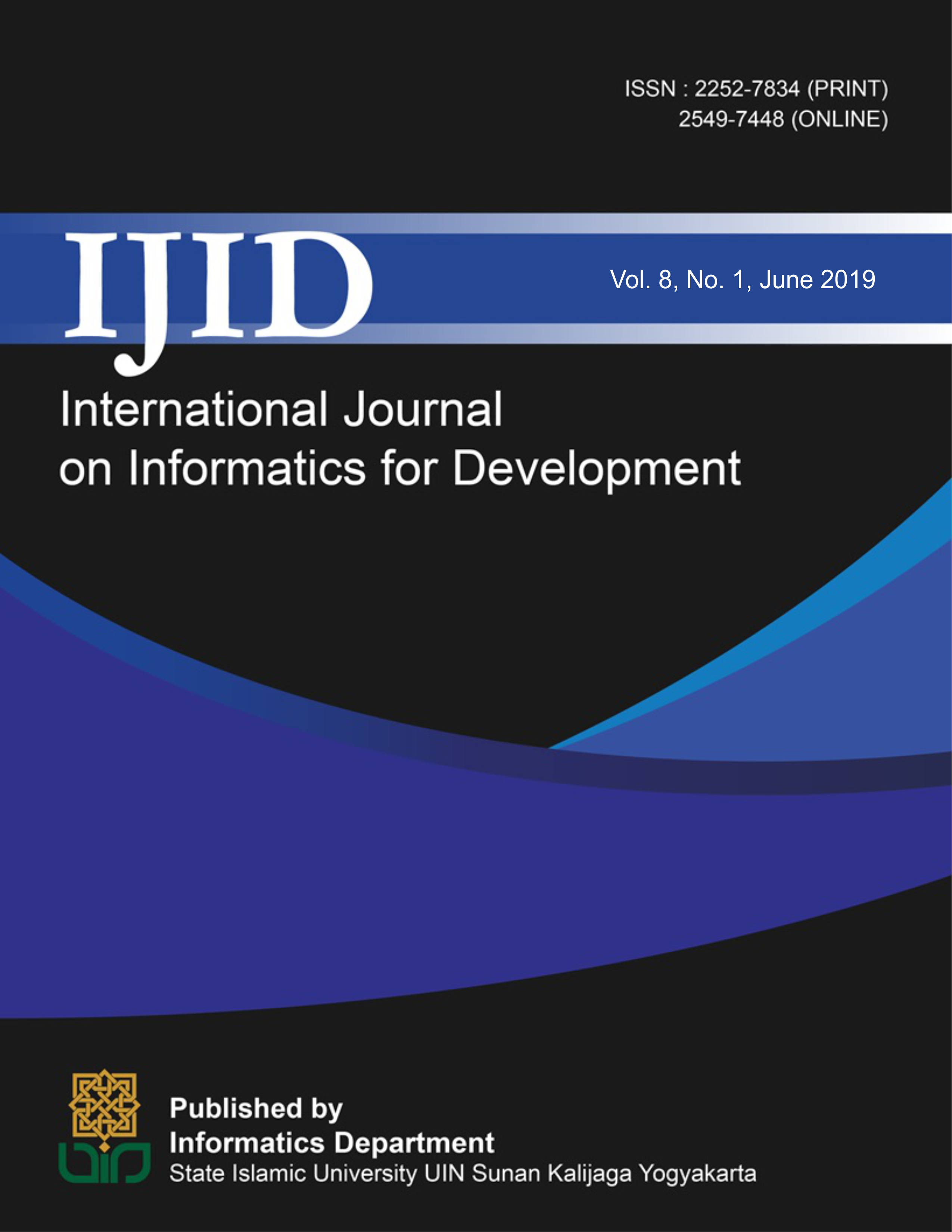Abstract
This study explains the implementation using the Weighted Aggregated Sum Product Assessment method in determining the best rice to be used for making Serabi cakes, the case was taken from a Serabi cake seller in Tegal City, Central Java with the aim of providing knowledge to Serabi cake traders to be more detailed in determining the rice that is used. suitable for use in making Serabi not just rice is cheap, but it is necessary to see the shape and characteristics of the whole rice. The steps taken to determine the best rice which will then be used as the basis for making Serabi cakes using the Weighted Aggregated Sum Product Assessment method are: (1) Prepare a matrix in which is the value of each set of criteria, (2) Normalize matrix data x becomes normalized data, (3) Calculates alternative values using Weighted Aggregated Sum Product Assessment formula so that the ranking value is found. After these steps are carried out, in this study the best rice that is right to be used as a material for making Serabi is Pelita rice with a yield of 7.12 by occupying the first rank.
References
F. J. Berlanga, M. D. J. Del Jesus, and F. Herrera, “Learning compact fuzzy rule-based classification systems with genetic programming,” EUSFLAT/LFA 2005 Proc., pp. 1027–1032, 2005.
E. D. Marbun, L. A. Sinaga, R. Simanjuntak, D. Siregar, and J. Afriany, “Penerapan Metode Weighted Aggregated Sum Product Assessment Dalam Menentukan Tepung Terbaik Untuk Memproduksi Bihun,” J. Ris. Komput., vol. 5, no. 1, pp. 24–28, 2018.
P. Simanjuntak, I. Irma, N. Kurniasih, M. Mesran, and J. Simarmata, “Penentuan Kayu Terbaik Untuk Bahan Gitar Dengan Metode Weighted Aggregated Sum Product Assessment ( WASPAS ),” J. Ris. Komput., vol. 5, no. 1, pp. 36–42, 2018.
R. Manurung, Fitriani, Retnowati Sitanggang, F. T. Waruwu, and Fadlina, “Penerapan Metode Weighted Aggregated Sum Product Assessment ( WASPAS ) Dalam Keputusan Penerimaan Beasiswa Bidik Misi,” JURIKOM (Jurnal Ris. Komputer), vol. 5, no. 1, pp. 148–151, 2018.
S. Barus, V. M. Sitorus, D. Napitupulu, M. Mesran, and S. Supiyandi, “Sistem Pendukung Keputusan Pengangkatan Guru Tetap Menerapkan Metode Weight Aggregated Sum Product Assessment ( WASPAS ),” Media Inform. Budidarma, vol. 2, no. 2, pp. 10–15, 2018.
A. Andini, G. A. Lestari, I. Mawaddah, A. S. Ahmar, and Khasanah, “Penerapan Sistem Pendukung Keputusan Pemilihan Ban Sepeda Motor Honda Dengan Metode Multi Objective Optimization on The Basic of Ratio Analysis ( MOORA ),” J. Ris. Komput., vol. 5, no. 1, pp. 29–35, 2018.
M. Ickhsan, D. Anggraini, R. Haryono, S. H. Sahir, and Rohminatin, “Sistem Pendukung Keputusan Pemberian Kredit Usaha Rakyat ( KUR ) Menggunakan Metode Weighted Product,” JURIKOM (Jurnal Ris. Komputer), vol. 5, no. 2, pp. 9–10, 2018.
M. Handayani, N. Marpaung, “Implementasi Metode Weight Aggregated Sum Product Assessment ( Waspas ) Dalam Pemilihan Kepala Laboratorium,” Seminar Nasional Royal (SENAR), vol. 3, no. 9, pp. 253-258, 2018.

IJID (International Journal on Informatics for Development) is licensed under a Creative Commons Attribution-NonCommercial-NoDerivatives 4.0 International License
